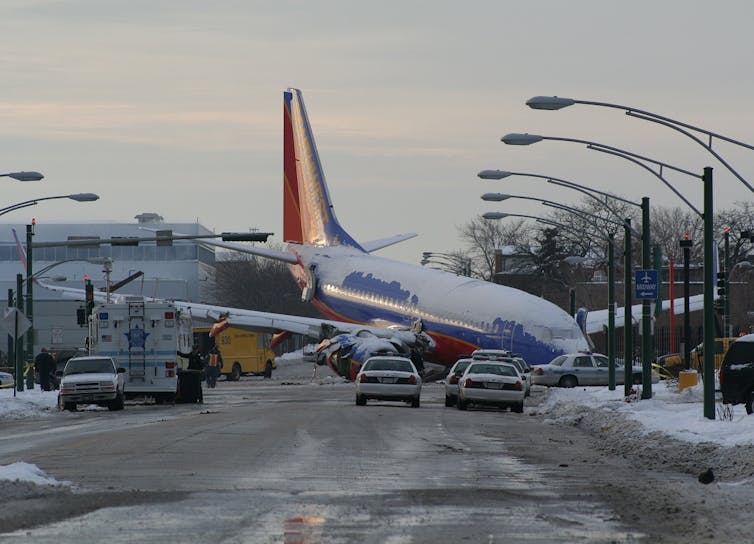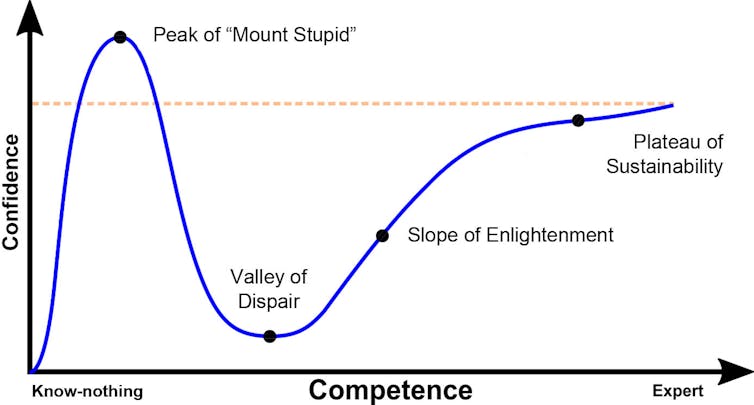
Deciding whether to land or to make a go-around is one of the most important and hazardous operations involved in flying. In fact, the vast majority of accidents in the past 20 years have occurred during the final approach or landing phases. While these are not the deadliest accidents (accounting for 9% of all deaths in commercial flights between 2015 and 2019), they nevertheless generate huge financial losses for airlines.
Airline pilots are expected to perform a go-around in the case of an unstabilised approach, which is characterised by a important deviation of at least one flight parameter (e.g., airspeed, flight path, altitude). However, a 2011 study showed pilots chose to continue the landing in 95% of unstabilised approaches for which a go-around should be performed (unstabilised approaches representing 3.5% of all approaches). The Flight Safety Foundation estimates that 83% of runway excursions and 54% of all accidents that occurred between 2000 and 2015 could have been avoided had the pilots chosen to go around.
An extensive study carried out in 2017 looked at the reasons why pilots struggle to opt to go around during an unstabilised approach. On top of the complexity, cost, and risks associated with this course of action (with one in ten go-arounds resulting in a hazardous outcome), the research also demonstrated that pilots are reluctant to call it due to feeling certain pressure from the rest of the crew to go ahead with a landing, as well as great unease when it comes to challenging the judgement of other pilots.
While the captain is both legally responsible for the aircraft operation and more experienced than the first officer, the onus is on the crew to execute the go-around if one of the pilots (regardless of status) has called it. Interestingly, studies have shown that go-around requests are issued less frequently by first officers than by captains.

Hierarchical influence and risk taking during landing
Just before the start of the pandemic, my colleagues and I investigated the behaviour of young, inexperienced first officers during more or less stable approaches, with an emphasis on the captain’s influence on their propensity to take risks during landing.
Participants were student pilots nearing the end of their training, all of whom possessed the necessary knowledge to fly an aircraft, but had no professional experience as commercial pilots. The captain, an A380 pilot for Air France, acted as our accomplice during the experiment.
The participants had to decide, both alone (in the first part of the experiment) and within a crew (in the second part), whether to land or to go around during various landing situations rated as (1) safe, (2) moderately risky, (3) highly risky, and (4) extremely risky.
Following the completion of the first part of the experiment, the participants were told that they would have to make decisions as first officers alongside a real A380 captain for Air France, who had agreed to take part in the study.
The uniformed captain was then invited into a room where he greeted the newly appointed first officer participant with a firm handshake. This exercise was intended to induce a strong hierarchical imbalance between the two pilots.
After introducing himself, the captain spoke to the participants of the potential difficulties in decision-making that could arise during landing, using the example of a hazardous situation (i.e., strong wind, slight overspeed, etc.) in which he had recently found himself and explaining how he had managed to land despite the adverse conditions.
This (entirely fabricated) story aimed to lead the participants to believe that their captain had a certain propensity for taking risks. At the end of his speech, the captain then walked out of the room, leaving the pilots to their own devices.
In the second part of the experiment, the participants had two decisions to make:
(1) a pre-decision, which was not communicated to the captain and made before being told his decision, and (2) a final decision, communicated to the captain and made after learning of his decision.
The captain chose to land the aircraft in safe, moderately risky, and highly risky situations, and to go around in extremely risky situations.
The captain’s direct and indirect influence on the first officer
Our results show that the captain strongly influenced the participants’ decisions in moderately and highly risky landing situations, whereby their likelihood of proceeding with a landing increased respectively by 19% and 15% (in comparison with the earlier solo pilot configuration).
In moderately risky situations, participants were significantly more likely to go ahead with a landing even before knowing the captain’s decision. Given this rate did not vary over time, this increase in risk taking may not result from a tendency to adapt to the captain’s behaviour.
Several studies have shown that the mere presence of one or more other people increases an observed individual’s motivation and desire to be perceived as competent by the observer(s).
Known as “social facilitation”, this phenomenon can often result in increased risk-taking behaviour. Further research has also indicated that first officers make a great deal of effort to appear competent in the eyes of their captain.
With this in mind, our results suggest that the increased risk taking observed in moderately risky situations reflected participants’ eagerness to impress the captain.
In highly risky situations, however, increased risk taking occurred at the moment of final decision, that is, only after the participants had been informed of the captain’s own decision.
Moreover, the more the participants perceived their captain as authoritative, the greater their tendency to adapt their decision to the Captain’s. These results suggest that a fear of opposing the captain may have accounted for the increased risk taking during highly risky landing situations.
Inexperience and Dunning-Kruger effect
Although the landing rate observed during the solo pilot configuration was proportional to the risks associated with the landing situations (57%, 34% and 30% respectively in moderately, highly, and extremely risky situations), first officers’ risk-taking was nonetheless elevated.
This result is coherent with previous studies, which had already shown that young, inexperienced pilots often struggled to assess the risk level in landing situations and decide to go around.
Of particular note in our study was the participants’ behaviour in extremely risky situations. In 8% of such situations, participants chose to insist upon landing despite knowing the captain’s wanted to go around (final decision).
This makes for a reassuring yet troubling statistic. We can find some reassurance in the fact that the captain’s feedback considerably reduced the participants’ risk-taking behaviour, which highlights the former’s positive impact and important role in limiting such behaviour among first officers.
But while this figure may appear rather low, it becomes troubling when placed in the context of annual air traffic figures worldwide (i.e. 38.9 million flights.
This result is all the more surprising when we consider that the participants were essentially operating as pilot flying, meaning that they would have had the commands of the aircraft. It appears, therefore, that certain participants had an unrealistic vision of their flying skills. This phenomenon (which I have covered in other articles) is referred to as “overconfidence bias” or the “Dunning-Kruger effect”.

It often affects beginners in a discipline, who tend to overestimate their skills by a significant degree. First officers under the influence of the Dunning-Kruger effect represent a risk to flight safety, especially when partnered with a captain who lacks assertiveness and/or authority. This was the case for instance with the accident that befell the Southwest Airlines 1248 Flight from Baltimore, Maryland to Chicago, Illinois, whereby the captain had given in to indirect pressure from his first officer and went ahead with a dangerous landing.
Communication between crew members: the cornerstone of flight safety
Flight safety depends largely on the pilots’ ability to prevent, detect, and correct their own errors, as well as those of other pilots.
A hierarchical organisation is by far the most effective for flight crews, but if the hierarchy balance between the captain and first officers is inadequate, it can present a safety risk. This is in great part due to the fact that first officers often have difficulty challenging captains, mainly because they see them as more experienced, do not wish to damage their relationship, and/or fear potential retaliation.
Yet, in spite of their expertise, captains are still human and therefore fallible. In the large majority of commercial aviation accidents that are attributed (at least partially) to human error, it is the captain who made the initial error behind the accident, which then went on to be either undetected or uncorrected by their first officers.
While the implementation of Crew Resource Management – a set of crew training procedures that aims to prevent human error – has greatly improved inter-pilot communication and crew decision-making, hierarchical imbalance between captains and first officers remains a potential hazard factor.
Our study has revealed how young, inexperienced pilots are very likely to be swayed by their captain’s influence in situations of particularly strong hierarchical imbalance. We are hopeful that our research will make captains more aware of how they may be influencing their first officers’ decisions (even without meaning to).
Our protocol could also help assess how easily swayed student pilots are during their training, and strengthen their awareness of these associated risks. This would contribute to improving flight safety in commercial aviation, which is – lest we forget – still the safest form of transport available.

Created in 2007 to help accelerate and share scientific knowledge on key societal issues, the AXA Research Fund has been supporting nearly 650 projects around the world conducted by researchers from 55 countries. To learn more, visit the site of the Axa Research Fund or follow @AXAResearchFund on Twitter.
Translated from the French by Enda Boorman for Fast ForWord
Eve Fabre has received funding from the European Union, the DGA and the AXA Research Fund. She currently works for APSYS.
This article was originally published on The Conversation. Read the original article.







